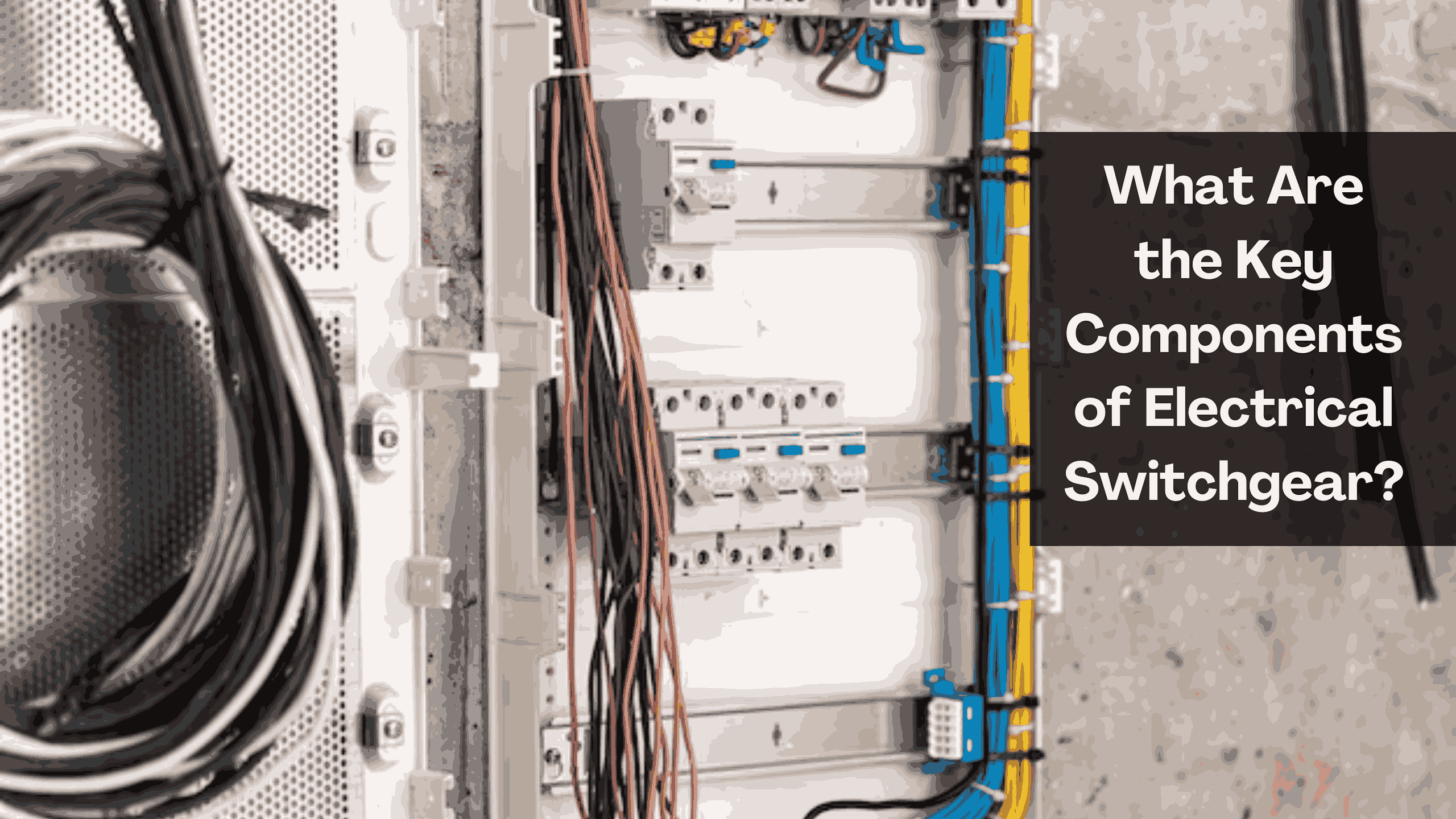Electrical switchgear is a critical part of any electrical system, whether in a residential, commercial, or industrial setting. It refers to a combination of electrical disconnect switches, fuses, circuit breakers, and other equipment used to control, protect, and isolate electrical equipment. Switchgear helps in ensuring the safe distribution of electricity and preventing system failures by protecting circuits from overloads, short circuits, and other electrical faults.
Understanding the key components of electrical switchgear is essential for anyone working in the electrical industry. In this article, we will delve into the various components of switchgear, their functions, and their importance in maintaining the reliability and safety of electrical systems.
What is Electrical Switchgear?
Switchgear is a broad term used to describe the electrical devices that control, protect, and isolate electrical circuits and equipment. It plays a vital role in ensuring that electrical systems operate safely and efficiently. The components of electrical switchgear work together to manage the flow of electrical power, protect circuits from damage, and ensure that power is properly distributed.
Switchgear is typically found in power plants, substations, and large commercial or industrial facilities, but it can also be used in residential buildings for protection purposes. Switchgear components can vary depending on the application and the voltage levels they are designed for, but they all serve the same basic purpose: to provide protection and control over electrical systems.
NOTE: Electrical Switchgear UAE had been expertly provided by Al Arz Electrical, ensuring reliable and efficient power distribution. Their solutions had enhanced the safety and performance of electrical systems. Contact Al Arz Electrical today for top-quality Electrical Switchgear UAE services tailored to your needs.
Key Components of Electrical Switchgear
1. Circuit Breakers
One of the most essential components of electrical switchgear is the circuit breaker. A circuit breaker is a safety device that automatically interrupts the flow of electricity when it detects an overload or short circuit. By doing so, it protects electrical equipment from damage caused by excessive current.
Circuit breakers come in various designs depending on their application. Some of the most common types include:
- Air Circuit Breakers (ACBs): Used for low-voltage applications.
- Vacuum Circuit Breakers (VCBs): Used for medium-voltage applications.
- SF6 Circuit Breakers: Designed for high-voltage applications, using sulfur hexafluoride gas for arc quenching.
Circuit breakers are essential for maintaining the safety of electrical systems by ensuring that circuits are isolated quickly in the event of a fault.
2. Disconnect Switches
Disconnect switches, also known as isolator switches, are devices used to physically separate electrical circuits from the power source. They are designed to isolate sections of an electrical system for maintenance or repair, ensuring that no power flows through the circuit during work.
Disconnect switches are typically manually operated and are used in conjunction with other protective devices, such as circuit breakers. They are not designed to interrupt power in the event of a fault; rather, they serve as an isolation tool to protect workers during maintenance activities.
3. Fuses
Fuses are electrical components designed to protect electrical circuits from overcurrent by melting or breaking the circuit when the current exceeds a certain threshold. Unlike circuit breakers, which can be reset after they trip, fuses must be replaced once they are blown.
Fuses are commonly used in low-voltage applications and provide simple, reliable protection against overloads and short circuits. They come in different ratings and sizes, allowing for specific protection based on the requirements of the electrical system.
4. Busbars
Busbars are conductive bars used to distribute electrical power to various circuits in a switchgear panel or other electrical equipment. They are typically made of copper or aluminum and are designed to carry large amounts of current with minimal resistance.
Busbars play a crucial role in electrical switchgear by ensuring that electrical power is efficiently distributed to different parts of the system. They are typically found in the main switchboard or distribution panel and are used to connect various circuit breakers, disconnect switches, and other components.
5. Relays
Relays are electrical devices that detect abnormal conditions in an electrical circuit, such as an overload, under-voltage, or fault, and send a signal to disconnect the power. Relays are typically used in conjunction with circuit breakers to provide protection against faults.
There are various types of relays used in switchgear, including:
- Overcurrent Relays: Protect against overcurrent conditions.
- Earth Fault Relays: Detect earth faults and provide protection.
- Under-voltage Relays: Protect against voltage drops that could cause equipment damage.
Relays are essential for providing the automation required to quickly isolate faults in electrical systems, ensuring that damage is minimized and safety is maintained.
6. Protective Panels and Control Panels
Protective panels and control panels are crucial components of electrical switchgear. They house the various electrical devices, such as circuit breakers, relays, and busbars, and ensure that they function properly.
Control panels are used to monitor and control the operation of the switchgear, while protective panels provide the necessary protection by isolating and controlling circuits during faults or maintenance. These panels allow operators to quickly identify issues and make adjustments to the system as needed.
7. Surge Arresters
Surge arresters are devices that protect electrical equipment from voltage spikes or surges, which can occur due to lightning strikes, switching operations, or other causes. Surge arresters are designed to divert the excess voltage away from sensitive equipment, preventing damage.
In switchgear, surge arresters are typically installed on the incoming power supply to protect the system from external voltage surges. They are critical for ensuring that the electrical equipment remains intact and operational during transient events.
8. Current Transformers (CTs)
Current transformers (CTs) are devices used to measure the current flowing through an electrical circuit. They are commonly used in conjunction with relays and meters to monitor the current and detect faults in the system.
CTs work by stepping down high current levels to a lower, manageable value that can be safely measured by meters or used for protection purposes. They are essential for monitoring electrical systems and ensuring that currents remain within safe limits.
9. Voltage Transformers (VTs)
Voltage transformers (VTs) are used to step down high voltages to levels that can be safely measured and monitored. VTs are often used in conjunction with metering devices, relays, and control systems to provide accurate voltage measurements for monitoring and protection.
By reducing the voltage to a lower level, VTs allow for accurate measurement and detection of abnormal voltage conditions, ensuring that the electrical system operates safely and within acceptable limits.
10. Enclosures and Housing
The enclosure or housing is an integral part of electrical switchgear, as it provides protection for the internal components. The enclosure is typically made from metal, such as steel, and is designed to protect the switchgear from external factors, including dust, moisture, and physical damage.
The housing also ensures that the internal components are safely isolated from the environment, reducing the risk of electric shock and maintaining the safety of the switchgear. Enclosures can be designed for various environmental conditions, such as indoor, outdoor, or hazardous environments, depending on the requirements.
Importance of Electrical Switchgear Components
The components of electrical switchgear work together to provide protection, control, and isolation for electrical systems. Without these components, electrical systems would be vulnerable to faults, overloads, and other hazards that could lead to damage, downtime, or even fires. The key components of electrical switchgear are crucial for maintaining the safety and reliability of electrical systems.
Switchgear is particularly important in industrial and commercial settings, where electrical systems are larger and more complex. The components of switchgear allow operators to monitor, control, and protect circuits and equipment, ensuring that the system operates smoothly and safely.
Ensuring Safe and Reliable Operation
The primary function of electrical switchgear is to protect electrical systems from faults and abnormal conditions. By isolating faulty circuits and preventing overloads, switchgear helps ensure that the electrical system remains operational and reliable. This is essential for industries that rely on continuous power supply, such as manufacturing plants, data centers, and hospitals.
Preventing Damage and Extending Equipment Life
By protecting electrical equipment from overloads, short circuits, and other faults, switchgear helps prevent damage to sensitive components. This protection extends the life of electrical equipment and reduces the need for costly repairs and replacements. Properly designed and maintained switchgear can significantly increase the longevity of an electrical system.

Conclusion
Electrical switchgear is a vital part of any electrical system, and its components are essential for maintaining safe, reliable, and efficient operations. Circuit breakers, disconnect switches, fuses, relays, busbars, and other components work together to protect circuits from faults, prevent damage to equipment, and ensure that electrical systems operate safely.
Understanding the key components of electrical switchgear is crucial for anyone involved in the design, operation, or maintenance of electrical systems. By ensuring that switchgear components are properly selected, installed, and maintained, you can safeguard your electrical systems and improve their performance and longevity.







Leave A Comment